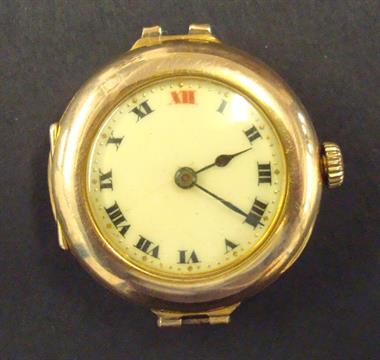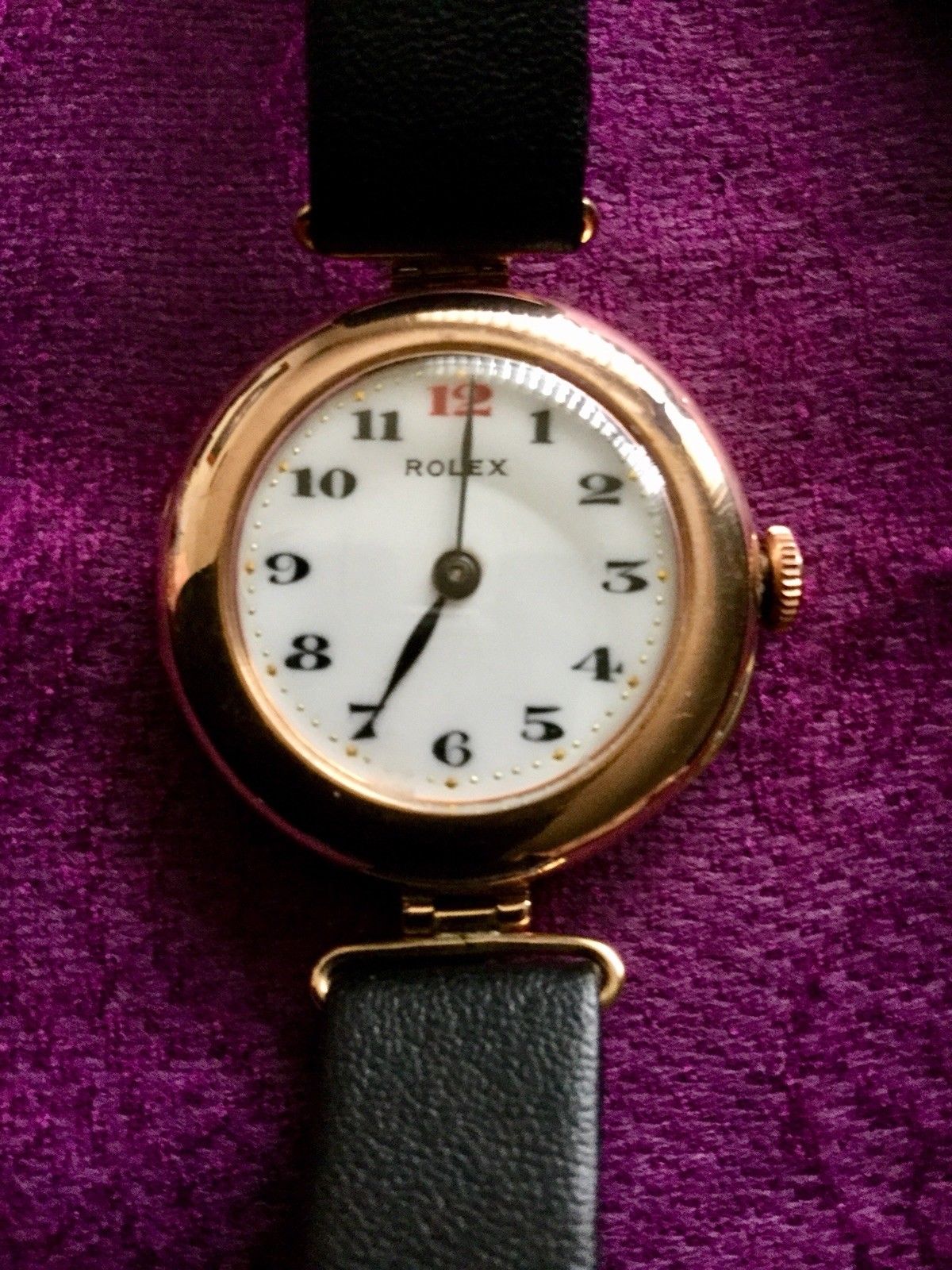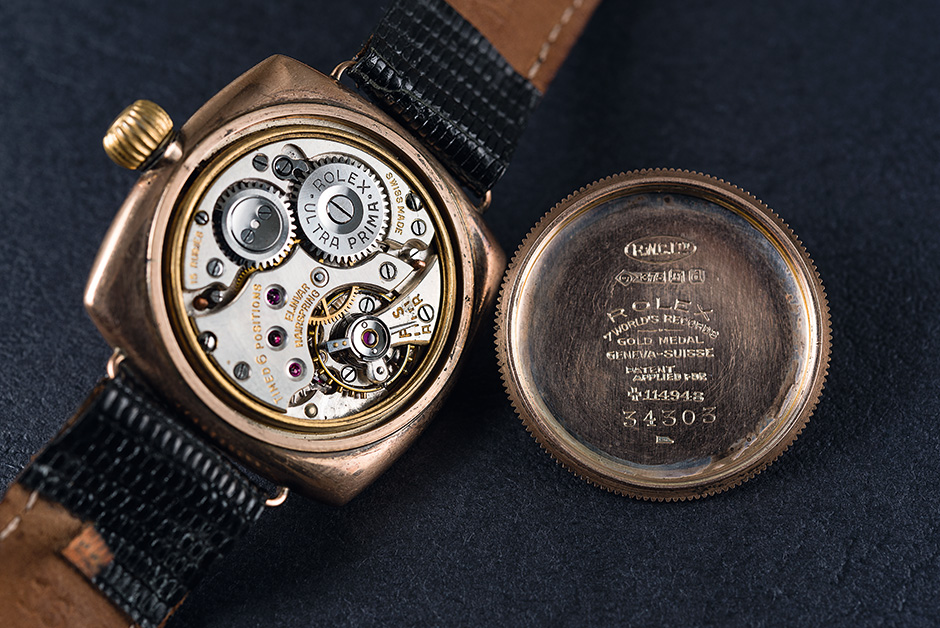Notes: The centerpiece of the watch is its beautiful original porcelain dial with black Roman numerals and distinctive red 12 and gold outer track with small diamond shaped markers. Powering this gem is a fine, early Rolex "Rebberg" timekeeping mechanism housed in its original 9K gold Rolex case.
When the wristwatch was a new idea, the position of the 12 wasn't immediately standardised at its now familiar position 90° anti-clockwise from the winding crown, (which is convenient to wear on the left wrist). Sometimes it was adjacent to the winding crown as on pocket watches or in an intermediate position between the crown and 90° anti-clockwise from it. Many early wristwatches were simply pocket watches either held on the wrist in leather cup attached to a strap, or with a chain or strap attached directly to the case by wire lugs. Because of this they didn't all follow the now accepted design of a wristwatch with regards to orientation of the dial and location of the crown. I have seen transitional wristwatches which, when strapped to the wrist, would have the 12 where we would expect to find the 3 today.
When the wristwatch was a new idea, the position of the 12 wasn't immediately standardised at its now familiar position 90° anti-clockwise from the winding crown, (which is convenient to wear on the left wrist). Sometimes it was adjacent to the winding crown as on pocket watches or in an intermediate position between the crown and 90° anti-clockwise from it. Many early wristwatches were simply pocket watches either held on the wrist in leather cup attached to a strap, or with a chain or strap attached directly to the case by wire lugs. Because of this they didn't all follow the now accepted design of a wristwatch with regards to orientation of the dial and location of the crown. I have seen transitional wristwatches which, when strapped to the wrist, would have the 12 where we would expect to find the 3 today.
Mechanism: The Hunter series of movements was introduced in 1923 and designed to replace the earlier Rebberg series. The new movements came in three versions: Prima, Extra Prima and Ultra Prima. The 10½ Hunter was named as 10½ is the size in lignes (23.7mm) and “Hunter” being the layout of the watch design, meaning that the winding crown was at 3, as in a hunter pocket watch (one with a lid that closed over the dial), rather than at 12 as in an open-face pocket watch. They are all 15 jewel constructions, and differentiated only by the timing tests carried out after construction: the best 10 per cent were given the coveted Ultra Prima designation, while the balance were split between Prima, which were the less accurate and Extra Prima, which fell in between. The Ultra Prima watches were also usually marked as such on the dial.
This early version of the Hunter was phased out with the introduction of the Superbalance series in 1935.
This early version of the Hunter was phased out with the introduction of the Superbalance series in 1935.
Item created by: gdm on 2018-09-30 20:31:15. Last edited by gdm on 2018-09-30 20:35:11
If you see errors or missing data in this entry, please feel free to log in and edit it. Anyone with a Gmail account can log in instantly.
If you see errors or missing data in this entry, please feel free to log in and edit it. Anyone with a Gmail account can log in instantly.




